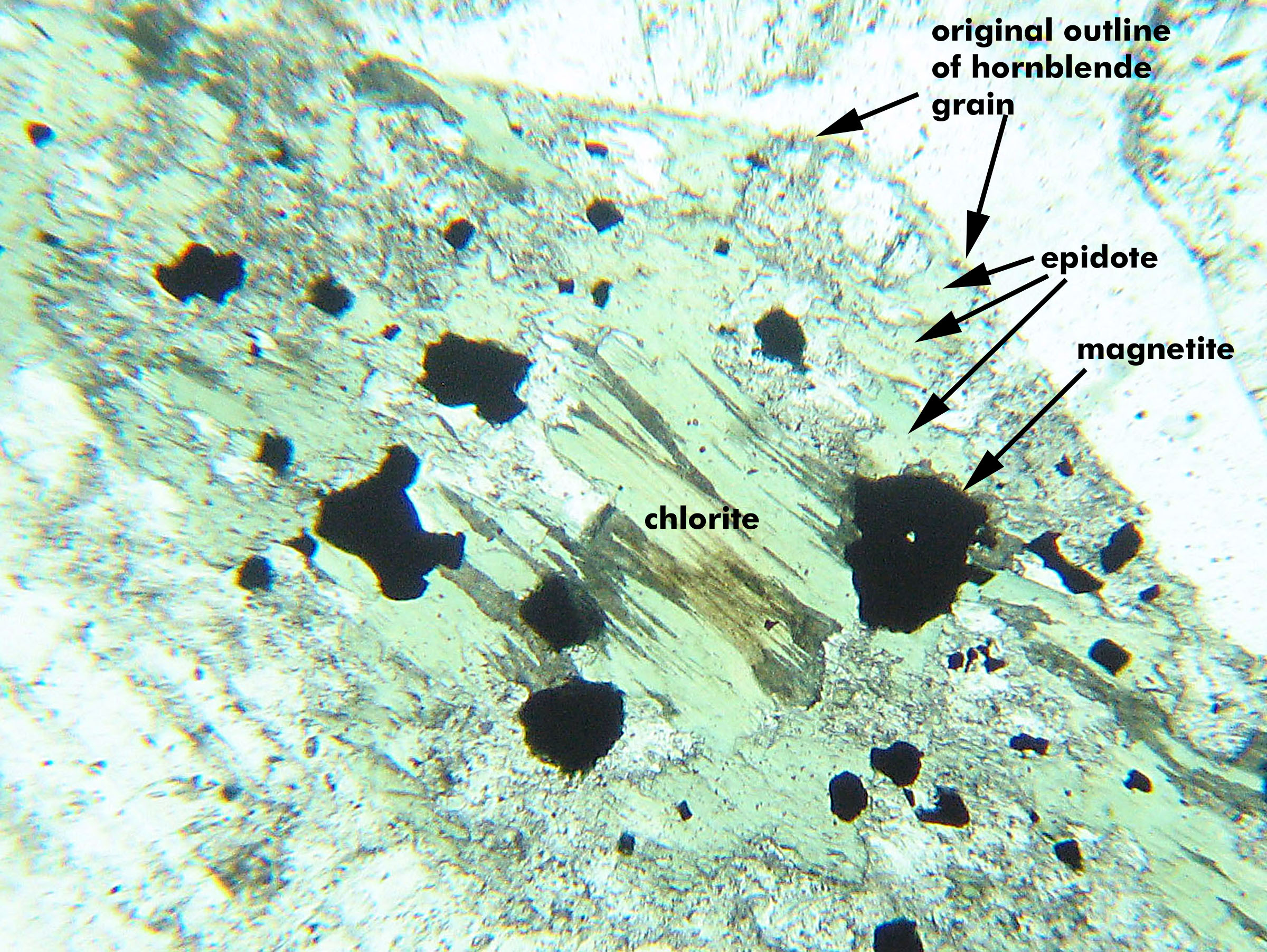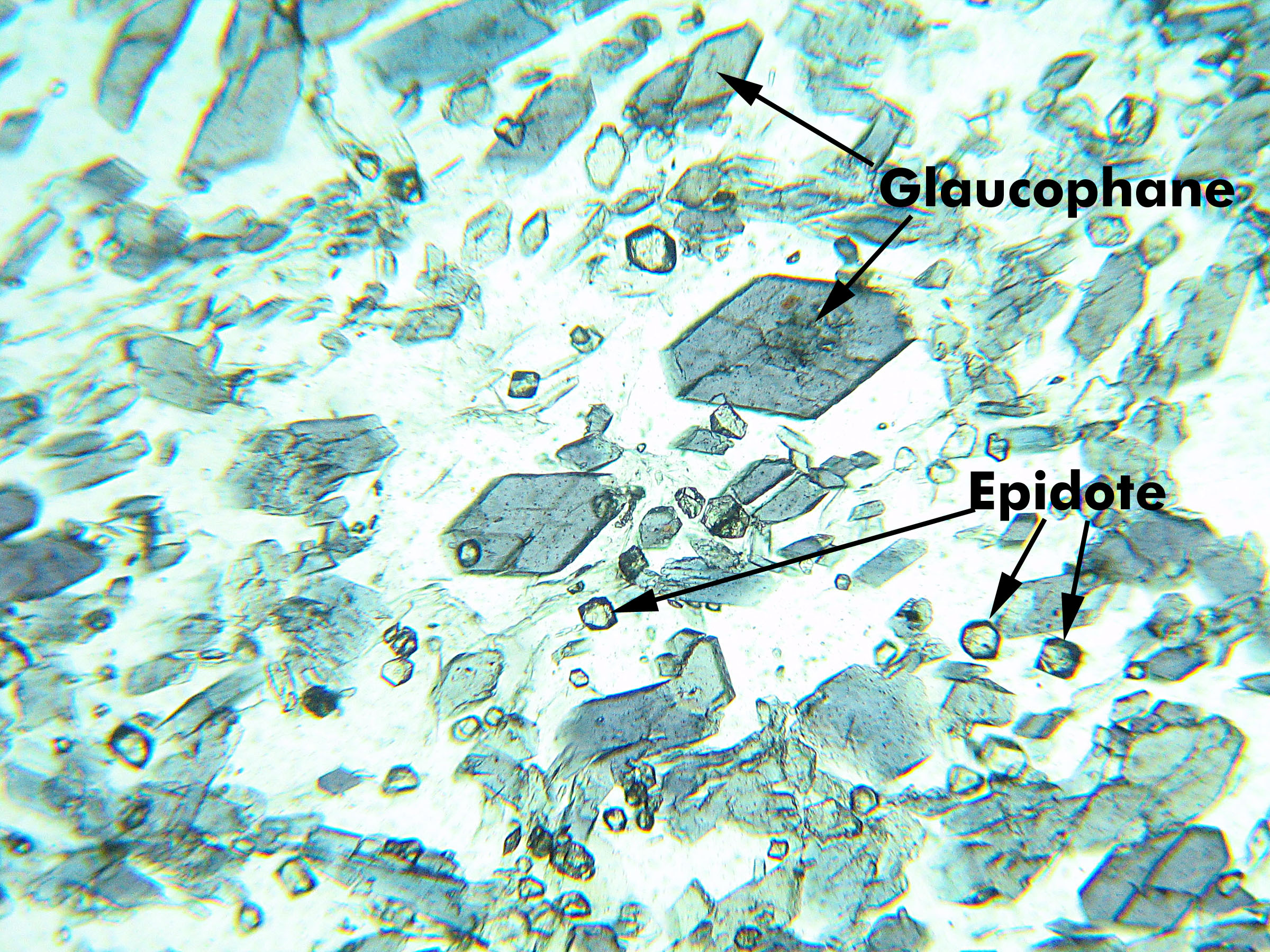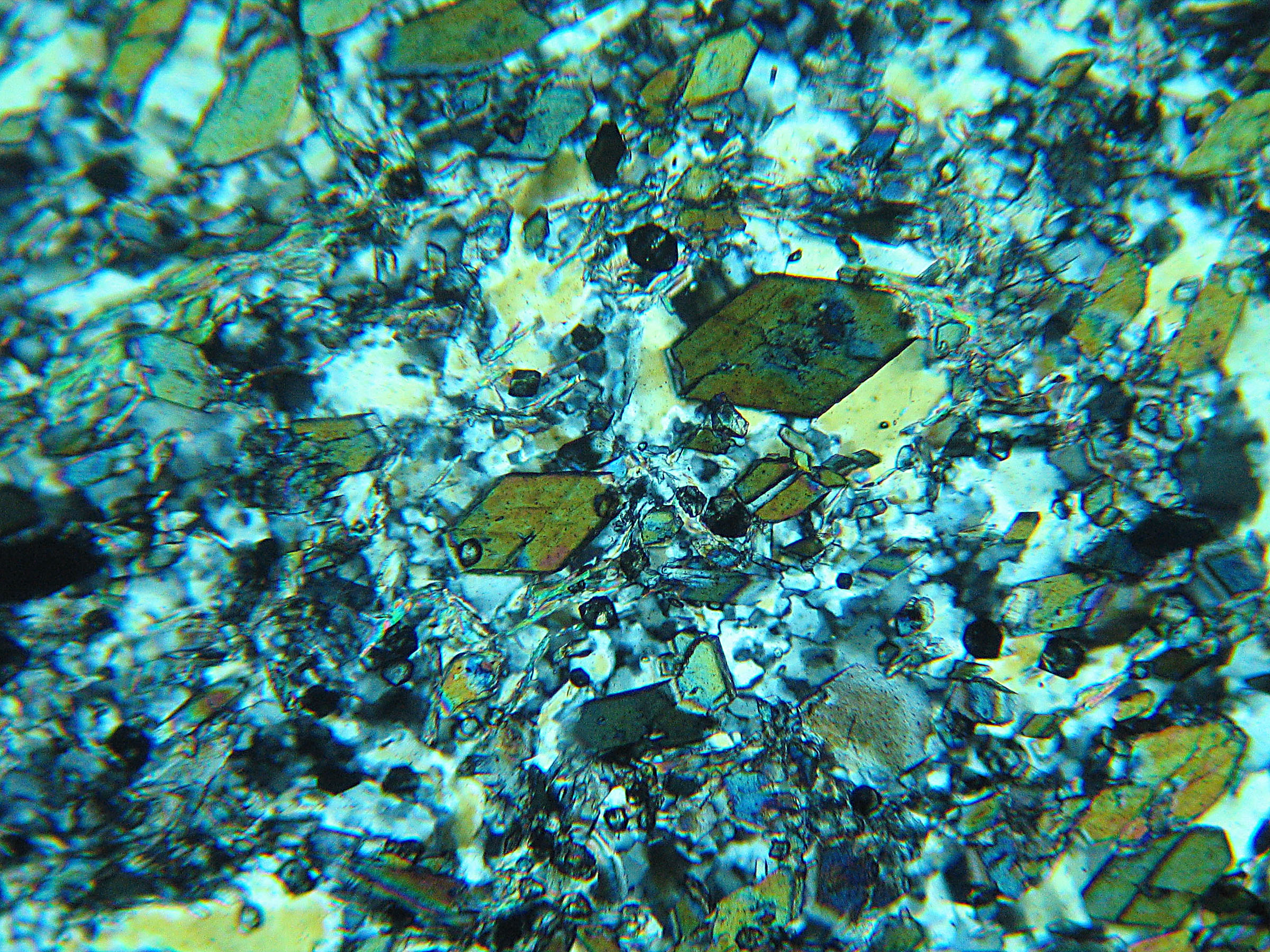Hornblende Replaced by Chlorite, Epidote and Magnetite in a Granite


The diamond-shaped original crystal was hornblende but it has been replaced by other minerals. In PP light, chlorite and epidote both appear light green (but the chlorite has a more "micaceous" character). Under crossed polars (XP) they are distinguished because the chlorite shows anomalous green-gray interference colors while the epidote shows upper second order interference colors. Th opaque mineral is magnetite; quartz and feldspar surround the amphibole grain.
This sample comes from near Garfield, Colorad.
The field of view is about 2 mm.










